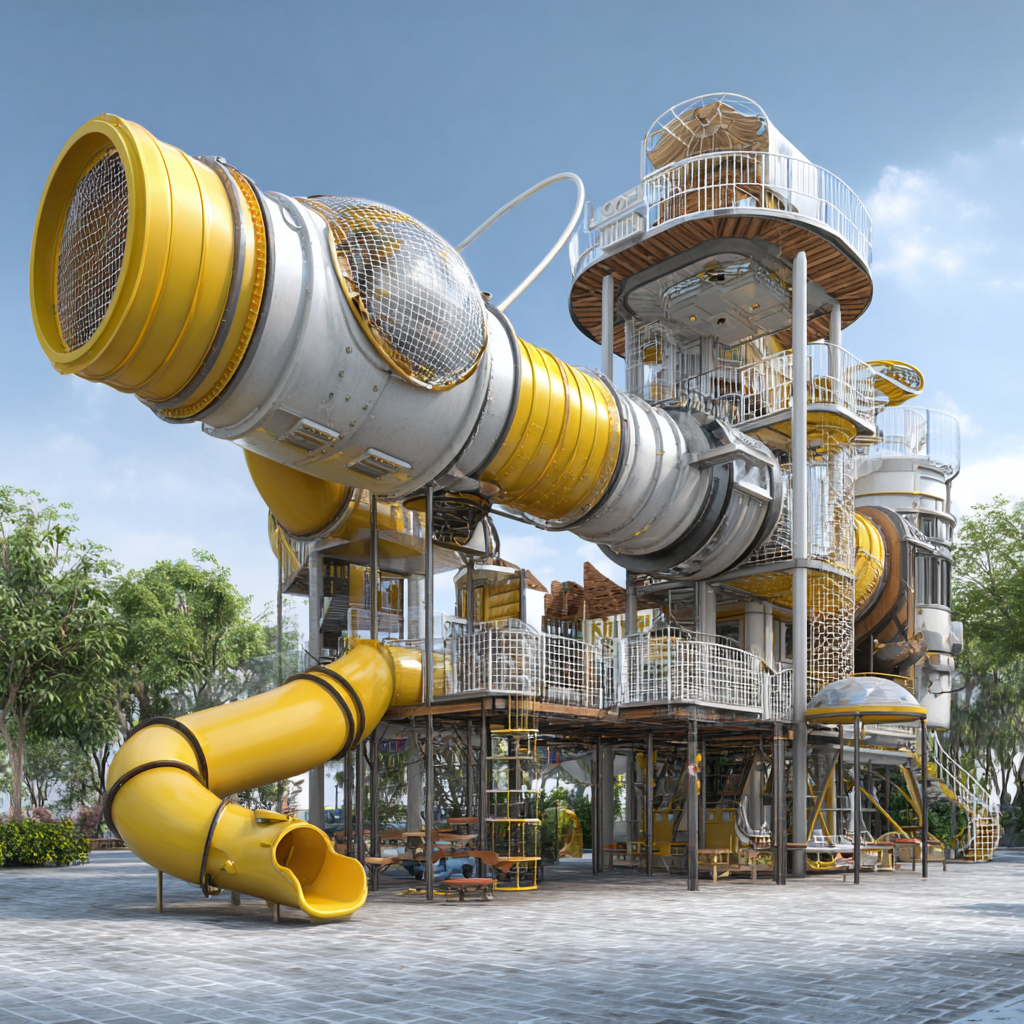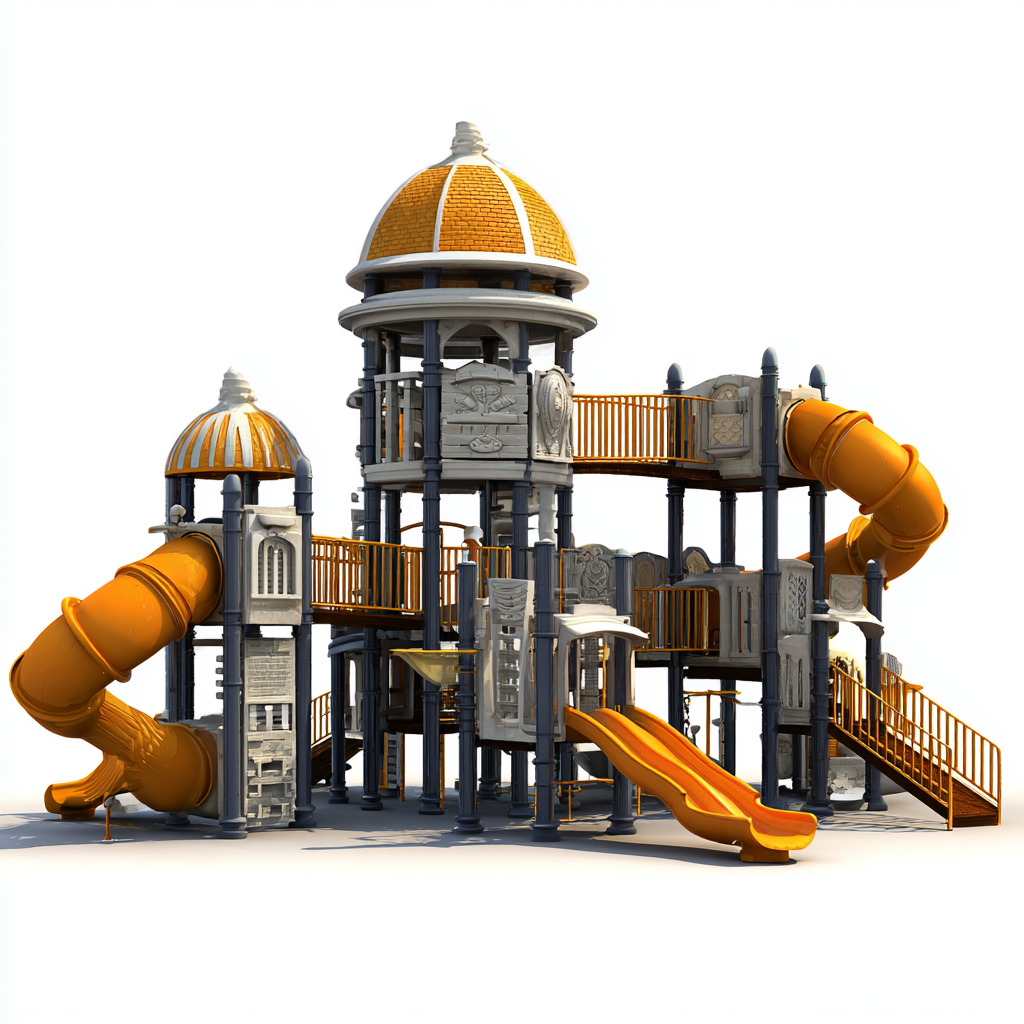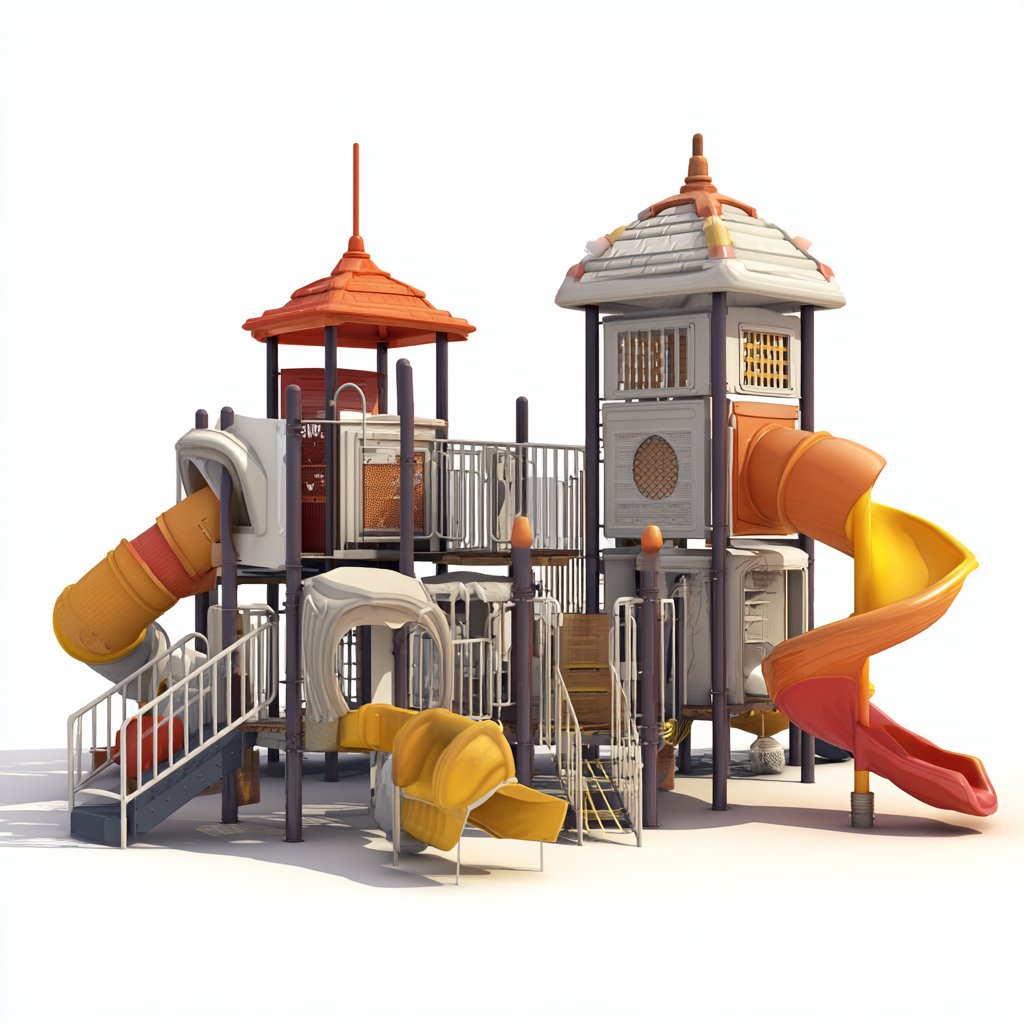
Inquiry
Form loading...
As parents and community planners increasingly recognize the pivotal role of play in child development, the demand for high-quality Outdoor Playground Structures has surged. According to a report by the International Playground Equipment Manufacturers Association (IPEMA), approximately 70% of children in the United States engage in outdoor play on a regular basis, highlighting the necessity for safe and engaging play environments. The Centers for Disease Control and Prevention (CDC) also emphasize that active play can significantly reduce childhood obesity rates and improve physical health. Consequently, investing in well-designed playground structures is essential, not only for fostering creativity and social interaction among children but also for ensuring their safety.

This blog will explore seven essential features that define the best Outdoor Playground Structures, providing insights for parents, schools, and community organizations aiming to create inviting and effective play spaces for children.
When selecting safe outdoor playground materials, several key considerations should be at the forefront of your decision-making process. Safety standards, especially those set forth by the Consumer Product Safety Commission (CPSC) and the American Society for Testing and Materials (ASTM), serve as critical benchmarks for evaluating equipment. According to a report from the National Program for Playground Safety, approximately 200,000 children visit emergency rooms annually due to playground-related injuries, underscoring the importance of choosing materials that meet or exceed these safety guidelines.
One of the most vital aspects is the use of impact-absorbing surfaces, which can significantly reduce the severity of injuries. Reports indicate that proper surfacing can decrease injury rates by as much as 80%. Materials such as engineered wood fiber, rubber mats, and poured-in-place rubber surfaces not only offer cushioning but also provide durability against wear and environmental factors. Additionally, corrosion-resistant metals and high-density polyethylene are recommended for playground structures as they ensure longevity and maintain visual appeal while withstanding harsh weather conditions. By prioritizing these safe materials, you can help create an enjoyable and secure play environment for children.
When considering the best outdoor playground structures, innovative design elements play a crucial role in enhancing play and exploration for children. One standout feature is the integration of natural elements, such as logs, boulders, and green spaces, which provide a sensory-rich environment. These natural components not only spark curiosity and imagination but also encourage children to engage with their surroundings in a meaningful way. By blending the playground into the landscape, designers foster a sense of adventure and discovery that complements physical play.
Another important design aspect is the incorporation of various height levels and climbing challenges. Features like multi-level platforms and climbing walls cater to children’s innate desire for exploration while also promoting physical activity. These structures can boost confidence as children learn to navigate and overcome obstacles, fostering resilience and problem-solving skills. Additionally, incorporating interactive elements such as slides, bridges, and tactile surfaces encourages collaborative play, allowing children to engage with peers in a fun and dynamic way. Together, these innovative design elements create a stimulating playground atmosphere where children can thrive physically and socially.
When it comes to designing modern outdoor playground structures, ensuring safety remains a top priority. Essential safety features include soft landing zones, durable materials, and innovative designs that mitigate risks. Playground equipment must be equipped with proper safety surfacing to cushion falls, minimizing injuries. Moreover, rounded edges and non-toxic finishes play crucial roles in preventing accidents, giving parents peace of mind while their children play.
The outdoor playground equipment market is experiencing dynamic growth, driven by various segments such as commercial playgrounds and adult outdoor fitness equipment. According to industry analyses, these segments are gaining popularity, with applications like monkey bars, sandboxes, climbing structures, swings, and interactive play zones becoming more prevalent. This diversification not only enhances user engagement but also ensures that playgrounds cater to a range of age groups and activities, all while maintaining essential safety standards as a fundamental component of their design.
| Feature | Description | Importance |
|---|---|---|
| Safety Surfacing | Use of materials like rubber mats or wood chips to cushion falls. | Reduces injury from falls. |
| Age-Appropriate Design | Structures designed for specific age groups. | Ensures suitable challenges and safety for users. |
| Sturdy Construction | Use of high-quality materials for durable play equipment. | Increases longevity and safety. |
| Regular Maintenance | Routine checks and repairs to keep playground safe. | Detects potential hazards before they cause accidents. |
| Clear Sight Lines | Design minimizes blind spots for supervision. | Enhances safety by allowing adults to monitor children. |
| Non-toxic Materials | Use of safe, environmentally friendly materials. | Protects children's health during play. |
| Accessibility Features | Equipment designed to be used by children of all abilities. | Promotes inclusive play opportunities. |
When designing outdoor playground structures, incorporating inclusive play is crucial to ensure that children of all abilities can engage and interact with one another. According to the National Center on Accessibility, approximately 1 in 5 children in the United States has some form of disability. This statistic underscores the importance of creating play environments that are accessible, allowing every child to enjoy the benefits of outdoor play.
Inclusive playgrounds feature equipment and designs that accommodate a range of abilities. For example, ground-level play areas allow children with mobility challenges to participate without barriers. Additionally, incorporating sensory play elements—like tactile panels and musical instruments—can stimulate engagement and creativity for children with various learning needs. The American Academy of Pediatrics emphasizes that inclusive play promotes social skills and emotional development, fostering friendships and cooperation among children from diverse backgrounds. By prioritizing these elements, playground designers can create spaces that not only provide fun but also nurture a sense of belonging for all children.

When it comes to outdoor playground structures, proper maintenance is crucial for ensuring safety and longevity. One effective tip is to regularly inspect each component of the playground, such as swings, slides, and climbing structures. Look for signs of wear and tear, rust, or loose bolts, and address these issues immediately to prevent accidents. Additionally, keeping the surrounding area well-maintained—such as removing debris and ensuring the ground is level—can enhance safety and playability.
Incorporating low-maintenance landscaping around playgrounds can also contribute to a thriving outdoor environment. Instead of traditional grass, consider installing drought-resistant plants or even artificial turf, which can withstand heavy use without the need for constant upkeep. The choice of resilient plants such as herbs may add a vibrant touch while requiring minimal care, allowing families to enjoy a lush, attractive space without the burden of frequent maintenance. This approach not only supports the playground's aesthetics but also encourages families to engage with their outdoor surroundings, fostering a sense of community and connection.

